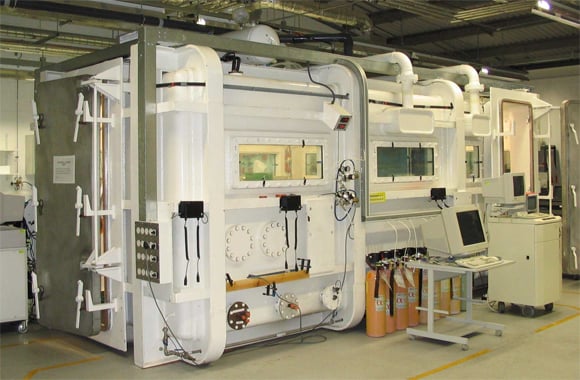This article is more than 1 year old
PARIS pops down to QinetiQ
Vital hypobaric chamber test proves... interesting
Tuesday saw the Paper Aircraft Released Into Space (PARIS) team down at QinetiQ's hypobaric chamber in Farnborough, testing the crucial Vulture 1 aircraft release mechanism.
 As we've previously explained, just how to get the Vulture 1 to separate from the main payload at a more-or-less predetermined height has given us plenty of headaches.
As we've previously explained, just how to get the Vulture 1 to separate from the main payload at a more-or-less predetermined height has given us plenty of headaches.
We've mulled, and rejected, electronic or pyrotechnic solutions, and were always keen on a purely mechanical, pressure-driven device.
To test such a device, though, we needed a proper facility, and QinetiQ very kindly came to the rescue with an offer to host the event. It explains that we had the use of "a three-compartment hypobaric chamber capable of achieving simulated altitudes in excess of 100,000 feet with an initial rate of climb of 40,000 feet per minute. The chamber dimensions are 5.7m × 3.7m × 2.4m high and it can accommodate up to 8 persons in its largest compartment.
“The chamber facility includes a vacuum reservoir enabling rapid decompressions of the chamber to take place. Rapid decompressions with a pressure change of 70 kPa in 0.1 second are attainable, which equates to a decompression from 8,000 ft to 65,000 ft.”

Yes, yes, we hear you cry - but what were you testing, exactly? Go directly to the next page for a previously-classified photograph and technical details...
